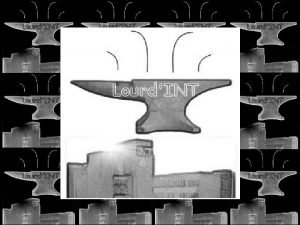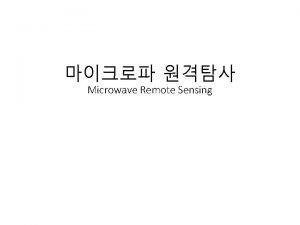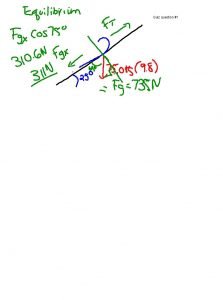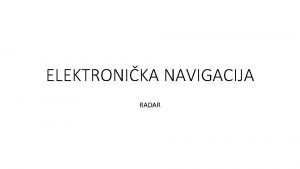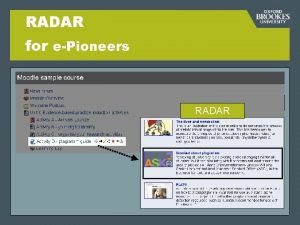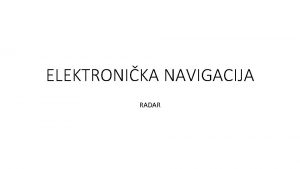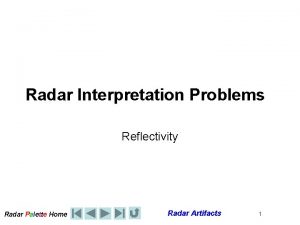QUIZ 1 QUESTION 1 In a Sidelooking Radar










- Slides: 10

QUIZ 1

QUESTION 1 • In a Side-looking Radar (SLR) system in Figure 1, what will happen if; – the slant-range distance between the building is less than – the slant-range distance between the building is greater than 10 marks


• The slant-range distance between the buildings is less than PL/2. • The pulse had time to travel to B and have its echo return to A, while the end of the pulse A continues to be reflected. • The 2 signals are overlapped and will be imaged as one large object extending from building A to B.

• If the slant range distance between A and B is greater than PL/2, the 2 signal will be receive separately resulting 2 separate image response. • Thus, the slant range resolution of and SLR system is – independent of the distance from the aircraft – Equal to half the transmitted pulse length

QUESTION 2 • With the help of a diagram, explain the basic operating procedure of a side looking radar (SLR) ? 40 marks

Side-looking Radar (SLR) • Microwave energy transmitted from an antenna in very short bursts or pulses. • The high energy pulses emitted over a time period on the order of microseconds (10 -6 sec). • The propagation of one pulse is shown by indicating the wavefront locations at successive increments of time. • Beginning with the solid lines (labeled 1 – 10), the transmitted pulse moves radially outward from the aircraft in a constrained (narrow) beam.

Cont… • After time 6, the pulse reach the house • A reflected wave (dashed line) is shown beginning at time 7. • At time 12 the return signal reaches the antenna and is registered at that time on the antenna response graph. • At time 9, transmitted wavefront is reflected of the tree and reached antenna at time 17. • Because the tree is less reflective of radar waves, a weaker response is recorded.

Side-looking Radar (SLR) Basic operating principle Return from house Pulse strength High energy output pulse Return from tree 0 2 4 6 Time 8 10 Figure 5. 2 12 14 16 18

Cont… • By electronically measuring the return time of signal echoes, the range or distance between the transmitter and reflecting object may be determined. • The slant range to any given object is: SR = slant range (direct distance between transmitter and object) c = speed of light (3 x 108 m/sec) t = time between pulse transmission and echo reception
 Difference between mti and pulse doppler radar
Difference between mti and pulse doppler radar Difference between pulse doppler radar and mti radar
Difference between pulse doppler radar and mti radar Costa level questions
Costa level questions Question without question words
Question without question words Closed question example
Closed question example Contoh paraphrase
Contoh paraphrase Situation-relating question
Situation-relating question Simple and complex indirect questions
Simple and complex indirect questions Examples of supporting questions
Examples of supporting questions Compelling question example
Compelling question example Questions burger quiz nuggets
Questions burger quiz nuggets










